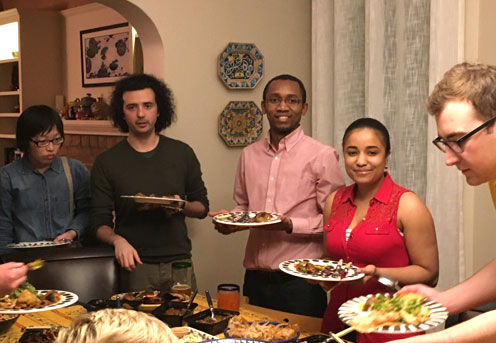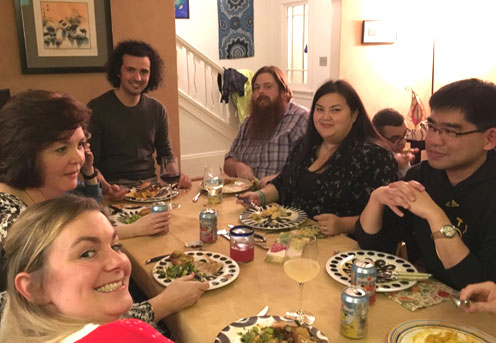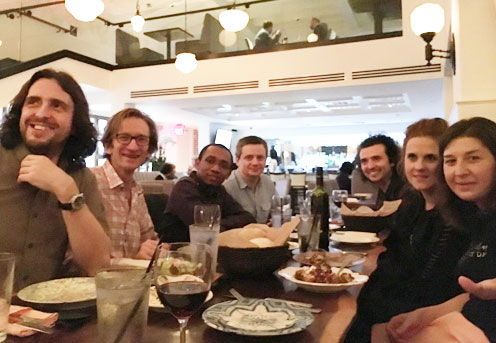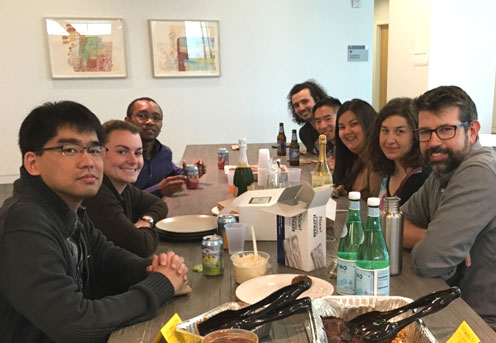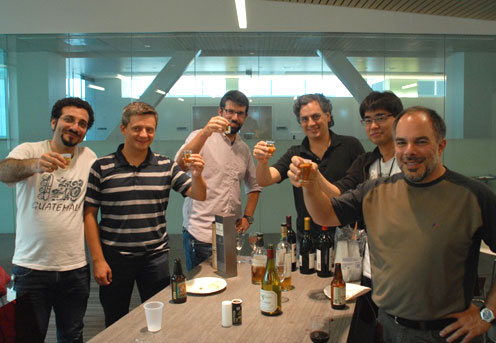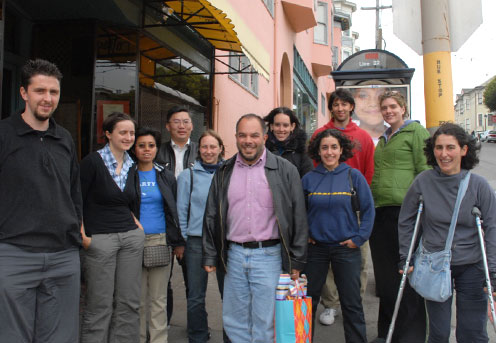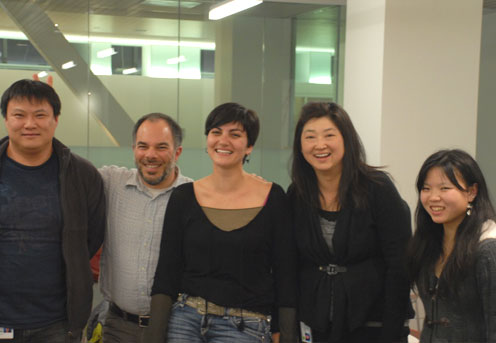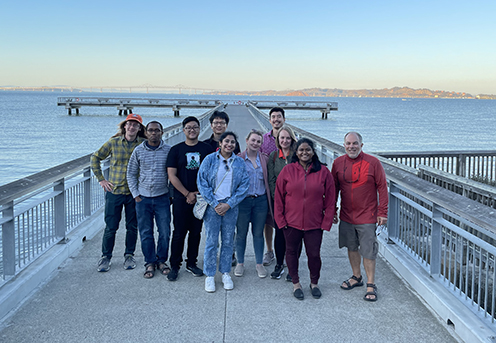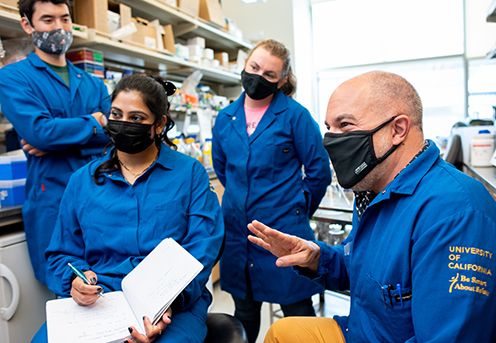About Us
The Minor Lab merges structural, biochemical, genetic, and electrophysiological methods to dissect the mechanisms of action of ion channels, the complex protein machines that generate electrical signals in the heart, brain, and sensory systems.
Our research spans a range of eukaryotic membrane proteins important for brain and heart function including voltage-gated calcium channels and K2P channels, as well as bacterial ion channels such as BacNaVs (bacterial voltage-gated sodium channels). One of the BacNaVs we study, NaVAe, comes from an organism living in Mono Lake, California (top image on this page). The insights into human ion channel function derived from such studies underlines the deep importance of evolutionary connections among all forms of life that underpin modern biological science.
Related News
Beating Seizures by Jamming the Cellular Circuitry, by Levi Gadye, May 30, 2023
Defining How a “Toxin Sponge” Found in Frogs and Toads Halts a Deadly Neurotoxi,n Argonne National Laboratory, Nov. 28, 2022
Fighting pain: the structure of gabapentin and its binding site in the Cavα2δ subunit, by Laurent Ferron, Maria A. Gandini & Gerald W. Zamponi, Jun. 7, 2023
Poison Frogs, Birds, Hold Clues to Antidotes for Deadly Toxins: ‘Toxin Sponges’ May Help Animals Avoid Their Own Defensive Poisons by Robin Marks, Aug. 5, 2021
Poison birds and frogs hold clues to antidotes for deadly toxins: Researchers show “toxin sponges,” not mutations, may help toxic animals avoid poisoning themselves California Academy of Sciences, Aug. 5, 2021
Here’s why poisonous animals don’t poison themselves: Toxic birds and frogs have evolved a way to avoid harm—but not in the way we thought, by Jason Bittel, Aug. 5, 2021
An absorbing tale: poison dart frogs might have a ‘toxin sponge,’ Nature Research Highlight, Aug. 5, 2021
One small frog study heralds a leap in poison cures: Golden poison frogs create antidote to their own nerve agent, study suggests, by Rhys Blakely, Aug. 5, 2021
Why don't poisonous animals die from their own toxins? by JoAnna Wendel, Sept. 11, 2021
K2P channel gating caught in the act: asymmetric pinching and dilation of a potassium channel selectivity filter, Webinar by Daniel Minor Jr., Sept. 15, 2020
Changing Channels: Interview with SBgrid consortium, by Daniel Minor Jr., Sept. 27, 2019
Research at UC San Francisco Connects Mono Lake, Evolution, and Cardiovascular Health, by Julia Frankenback, Dec. 8, 2013
UCSF Research Connects Mono Lake, Evolution, and Cardiovascular Health, by Clarice Estrada, Dec. 11, 2013

PRINCIPAL INVESTIGATOR
Daniel L. Minor, Jr., Ph.D.
ProfessorUniversity of California San Francisco,
Cardiovascular Research Institute
Department of Biochemistry and Biophysics and Cellular and Molecular Pharmacology
Faculty Scientist, Molecular Biophysics & Integrated Imaging Division, Lawrence Berkeley National Laboratory, Berkeley

LAB MEMBERS
The Minor lab is located in the Smith Cardiovascular Research Building at the UCSF Mission Bay Campus in San Francisco. If you are interested in joining us, please see here.
Latest Publications
Structural insights into the mechanisms and pharmacology of K2P potassium channels. Natale, A.M., Deal, P.E., and Minor, D.L. Jr. Journal of Molecular Biology 433:166995 (2021)
Quaternary structure independent folding of voltage-gated ion channel pore domain subunits. Arrigoni, C., Lolicato, M., Shaya, D., Rohaim, A., Findeisen, F., Colleran, C.M., Dominik, P., Kim, S.S., Schuermann, J., Kossiakoff, A.A., Minor, D.L., Jr. bioRxiv doi: https://doi.org/10.1101/2021.08.15.456357 (2021)
Production of K2P2.1 (TREK-1) for structural studies. Lee, H., Lolicato, M., Arrigoni, C, and Minor, D.L., Jr. Methods in Enzymology 653 151-188 (2021)
Differential effects of modified batrachotoxins on voltage-gated sodium channel fast and slow inactivation. MacKenzie, T.M.G., Abderemane-Ali, F., Garrison, C.E., Minor, D.L., Jr., and Du Bois, J. Cell Chemical Biology Dec 24;S2451-9456(21)00517-1 (2021)
Evidence that toxin resistance in poison birds and frogs is not rooted in sodium channel mutations and relies on ‘toxin sponge’ proteins. Abderemane-Ali, F., Rossen, N.D., Kobiela, M.E., Craig, R.A.II, Garrison, C.E., Chen, Z., O'Connell, L.A., Du Bois, J., Dumbacher, J.P., and Minor, D.L., Jr. J. Gen. Physiol 153:e202112872 (2021)
K2P channel C-type gating involves asymmetric selectivity filter order-disorder transitions. Lolicato, M., Natale, A.M., Abderemane-Ali, F., Crottes, D., Capponi, S., Duman, R. Wagner, A., Rosenberg, J.M., Grabe, M., Minor, D.L. Jr., Science Advances 6 eabc9174 (2020)
Polynuclear Ruthenium Amines Inhibit K2P Channels via a "Finger in the Dam" Mechanism. Pope, L., Lolicato, M., Minor, D.L. Jr., Cell Chemical Biology 27, 511-524 (2020)
Structure of the saxiphilin:saxitoxin (STX)complex reveals a convergent molecular recognition strategy for paralytic toxins. Yen, T.-J., Lolicato, M., Thomas-Tran, R., Du Bois, J., and Minor, D.L. Jr., Science Advances 5 eaax2650 (2019) View Press
SARAF luminal domain structure reveals a novel domain-swapped β-sandwich fold important for SOCE modulation. Kimberlin, C.R.,Meshcheriakova, A., Palty, R., Karbat, I., Reuveny, E., and Minor, D.L. Jr. Journal of Molecular Biology 431 2869-2883 (2019)
A selectivity filter gate controls voltage gated calcium channel (CaV) calcium-dependent inactivation. Abderemane-Ali, F., Findeisen, F., Rossen, N.D., and Minor, D.L. Jr., Neuron 101 1134-1149 (2019)

